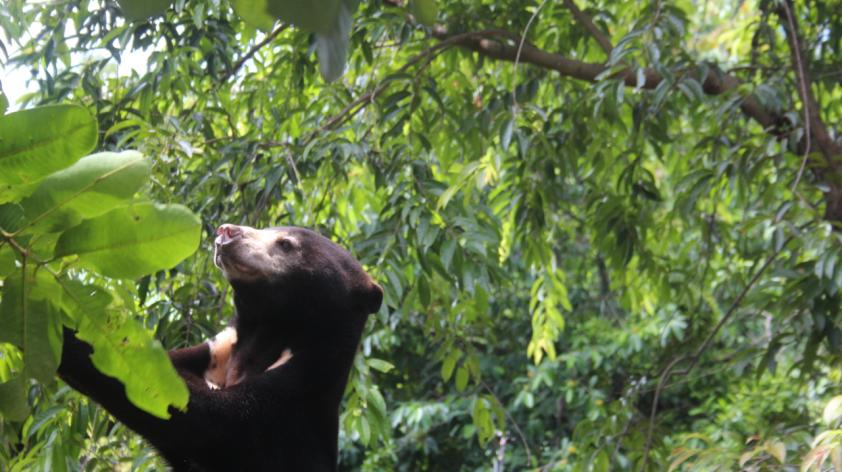
Tackling Illegal Wildlife Trade Starts with the Village
In an earlier blog post, we introduced the collaborative work of San Diego Zoo Global (SDZG) in tackling illegal wildlife trade (IWT) issues throughout Southeast Asia. Fascinating insights are emerging from these vital collaborative efforts across six countries. Perhaps the most important understanding we have gained is that wildlife product use is spatially and socially variable, both between and within countries.
In Phnom Penh, the capital of Cambodia, use of bear parts among elites appears to be mostly men, who consume meat and/or bear bile wine in social settings. However, that picture is very different in other areas of the country. While working in mid-west Cambodia, Elizabeth Davis, researcher, SDZG Community Engagement, found herself among approximately ten market women, all of whom were determined to tell her about bear bile’s efficacy in treating post-partum “weakness”.
As researchers in the field, we are continually presented with intriguing snapshots of the realities of the use of bear parts in the areas we work. For instance, earlier this year, we (Jenny, Liz, and Community Engagement’s post-doc, Diogo Verissimo), were in a field site in northeast Cambodia with our in-country team member Thona Lim who works with the conservation organization Free the Bears. Thona Lim is a highly accomplished and engaging researcher who has found success in getting individuals who use bear parts to discuss their use with her. With her, we had an informal meeting with a village chief, to assess his thoughts on bear part use within the village. Through the course of the conversation, he admitted to his own use, but it was his assistant who had the most interesting story. She told us that she had been approached in the local market by a man who offered her an entire body of a bear for $100. She didn’t believe him, so he led her to a cooler he had, which had the bear stuffed into it. When we asked her what she had done upon seeing this bear, she said, “I bought it!”
Both vignettes presented here indicate that efforts to address use of bear parts will need to be tailored to the specific groups using the parts. An educational/behavior change campaign about bile’s lack of efficacy in treating post-partum ailments will clearly not resonate among upper class males in Phnom Penh. When thinking about the woman who casually bought the bear, it’s apparent that greater work needs to be done in these regions, to decrease the acceptability of purchasing and consuming bear parts. Better enforcement of the laws, and more awareness among consumers as to what those laws are, will not be enough to change behaviors. The woman who purchased the bear did not purchase it merely because she was not aware that to do so would be illegal; rather, she purchased it because she could conceive of making a profit from the bear parts.
In recognition of such human obstacles, in collaboration with our partners, we have defined our goal(s): to reduce the overall prevalence of bear part use in Southeast Asia, and to reduce the acceptability among people of bear part use within the region. We have also created detailed plans for how we shall accomplish our goals. We plan to employ behavior change campaigns, which will use well-established marketing techniques to influence consumer behavior away from using bear parts.
Our first pilot campaign has begun in northeast Cambodia, and if successful, will be applied throughout Cambodia, and later other areas in Southeast Asia. This campaign will urge individuals to consult medical professionals before purchasing bear parts, and will urge medical professionals to prescribe alternatives to bear parts. These messages are the result of our previous research in the area, which found that use was primarily for medical reasons. As bear bile/gallbladder alternatives are freely available, and such use is usually for non-essential reasons (e.g. bruising), it may be possible to “nudge” individuals towards cheaper and more conservation-positive options.













